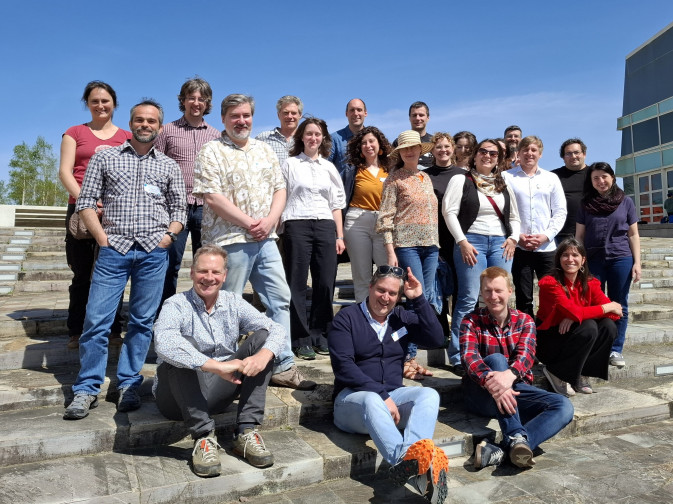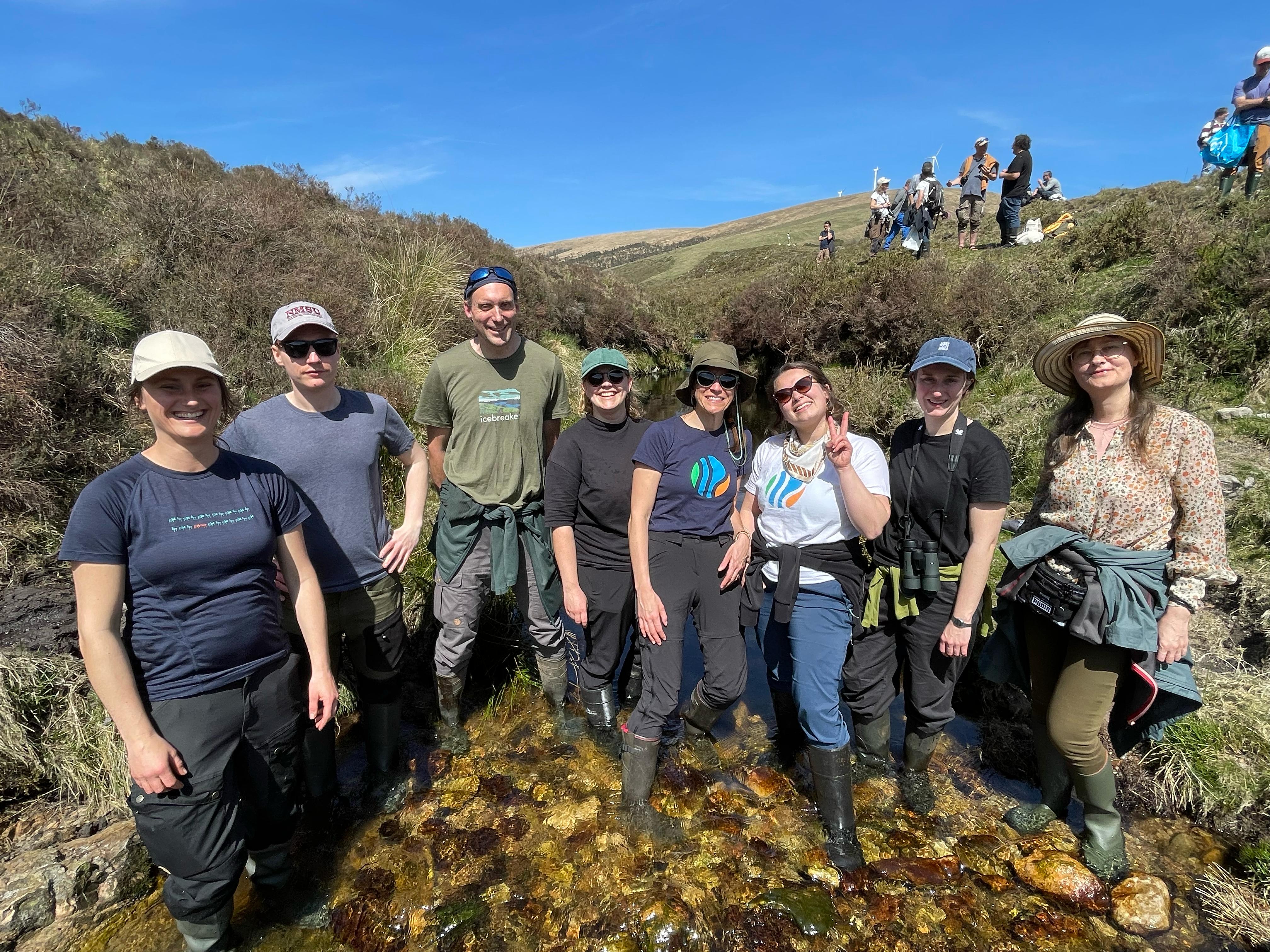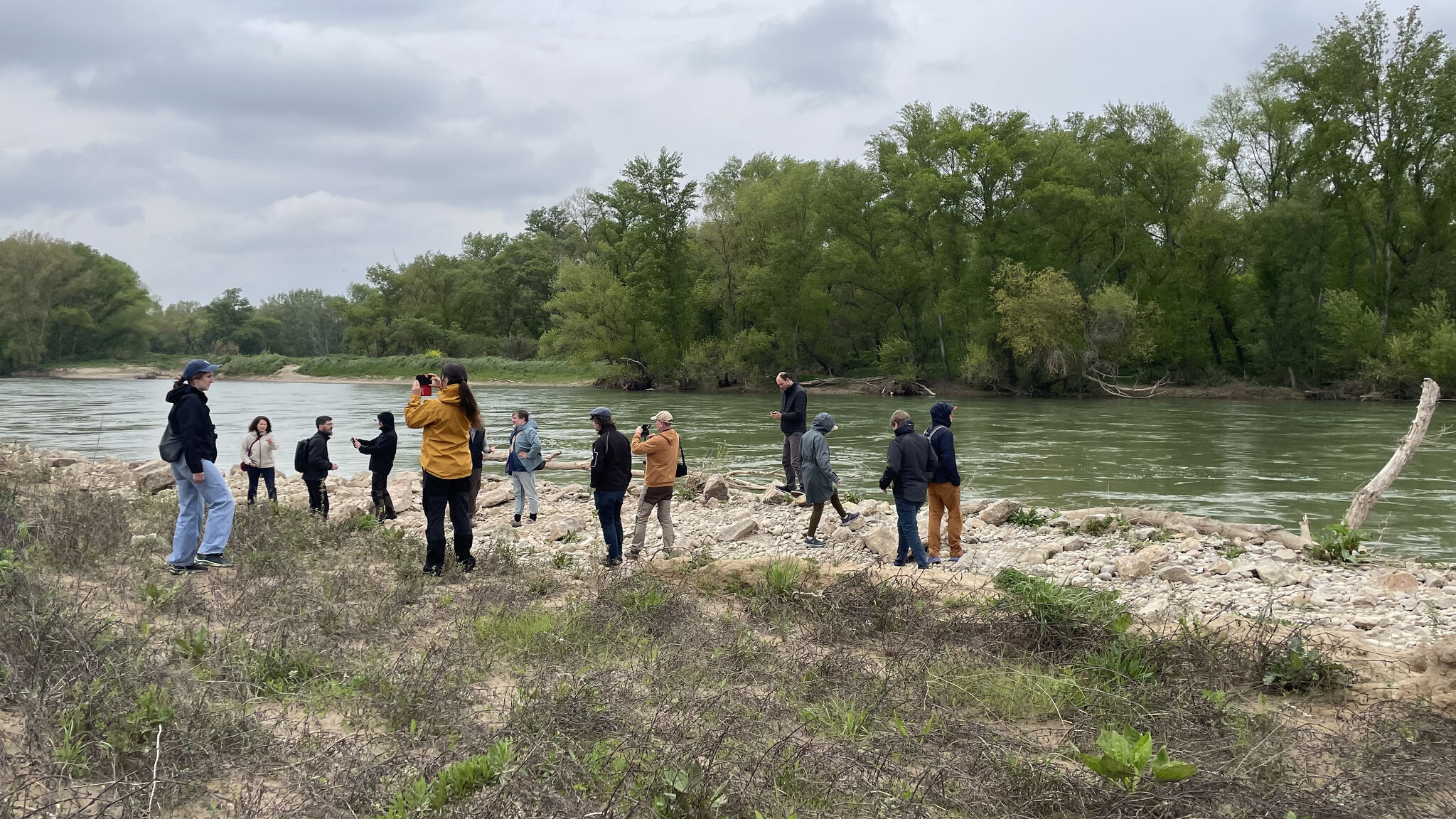
SpongeBoost’s Annual Meeting in Santiago de Compostela, Spain
From 7 to 11 April, the SpongeBoost consortium convened in the historic city of Santiago de Compostela for its annual meeting. Hosted by the project partners CIREF, with the support of CISPAC, the event was held at the Cidade da Cultura de Galicia and brought together representatives from the project’s 10 partner institutions to strengthen collaboration around water resilience and ecosystem restoration across Europe.
The meeting opened with a policy-focused session led by Paul Brotherton of Wetlands International Europe, who examined the project’s role within the broader context of EU environmental frameworks. Then, Jan Macháč from UJEP introduced a methodological framework for stakeholder and institutional analysis.
The second day welcomed a more formal setting, with guests including the project officer, advisory board members, and representatives from sister projects SpongeScapes and SpongeWorks, who joined both in person and online. Mathias Scholz, SpongeBoost’s coordinator from UFZ and the project manager Michael Vieweg provided a comprehensive overview of the project’s objectives, the work packages and the overall project timeline. Their presentation was followed by Aniela Stachnik from CIREF, who walked participants through the project’s field sites.
Afterwards, the teams behind Work Packages 1, 2, and 5 presented their progress. The team from UJEP, leading Work Package 1, shared the results of their systematic literature review – screening nearly 2000 publications and identifying 264 relevant studies on enhancing natural water retention across Europe. Bureau Stroming, leading Work Package 2, introduced the S.P.O.N.G.E. platform – an interactive tool for visualising the scope and progress of sponge-related initiatives throughout the continent. As part of this session, the project partners from Pensoft Publishers and Environmental Action Germany shared updates from WP5 on communication and dissemination activities. A notable highlight was the debut of the first SpongeBoost comic book.
Later that day, partners presented the latest updates from the project’s case study sites in Estonia, the Azores, and Germany - ranging from peatlands, peat bogs, and floodplains. They highlighted the effects of the already implemented restoration measures across these landscapes. Each presentation concluded with a short Q&A session, encouraging the exchange of ideas and prompting insightful discussion among participants.
On the third day, our team visited key peatland sites in the Xistral Mountains, Galicia, with Spanish colleagues studying peatland hydrology. These rare Atlantic peatlands are vital for water regulation and biodiversity. From degraded areas like Veiga do Rial to well-preserved blanket bogs, we observed contrasting conditions that inform restoration and management strategies. The RURALTXA team also shared how traditional horse grazing can support conservation efforts.

Consortium members on the field trip to the Serra do Xistral in Galicia;
Photo credit: SpongeBoost consortium
The fourth day included a World Café session, offering space for partners to exchange ideas on communication-related topics. Discussions focused on the upcoming edition of the comic book, expanding the project’s outreach, future publication opportunities, and ways to support collaboration across teams.
On the final day, participants visited the Ebro River floodplains near Alfaro and Castejón, part of the SpongeBoost project. There, they examined large-scale interventions under the LIFE EbroResilience project, which are giving the river more space to flood safely. These efforts have improved water retention, reduced flood risk, and enhanced wetland function.

A picture from the Ebro case study area;
Photo credit: SpongeBoost consortium
Throughout the week, the annual meeting provided a valuable platform for exchanging expertise and sharing results. The meeting deepened collaboration across the consortium and moved the project a step closer to its goals of better water retention, stronger climate resilience, and more sustainable land use across Europe.
Stay tuned for more insights, videos, and behind-the-scenes moments from the annual meeting in Spain – there’s much more to come!